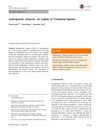2 year progress on fin and minox Progress Pictures 5/29/2020
A user's 2-year experience with Minoxidil and Finasteride as a treatment for hair loss, including the costs involved and potential side effects. Other users shared their experiences and asked questions about their own use of these treatments.
View this post in the Community →
Similar Community Posts Join
6 / 1000+ resultscommunity Study shows further evidence that finasteride and dutasteride take 12-18 months or more to show significant results. Do NOT give up early
The conversation discusses the effectiveness of finasteride and dutasteride in treating hair loss, emphasizing that significant results often take 12-18 months or more. Dutasteride is generally considered superior, with similar or fewer side effects than finasteride, but patience is required for noticeable improvement.
community Testosterone and hair loss seeming irrelevance
The conversation is about the role of testosterone in hair loss and the effectiveness of different treatments. The conclusion is that DHT is the main culprit for hair loss, and finasteride has been proven to work long-term in maintaining and regrowing hair. Testosterone may have a minor effect, but it is not the primary cause of hair loss.
community 31M. Just diagnosed with androgenic alopecia. Fears of min.
A 31-year-old man with androgenic alopecia is considering treatments like finasteride, minoxidil, and ketoconazole shampoo but is worried about finasteride's side effects. Users recommend starting with finasteride or dutasteride for DHT blocking, suggesting topical solutions to reduce side effects.
community [study analysis] Microdose of topical Finasteride for all the benefits and none of the sides?
Topical finasteride as a potential alternative to oral finasteride for reducing DHT levels on the scalp with fewer side effects, and other hair loss treatments such as minoxidil.
community COMPLETE OVERVIEW of the Treatment of androgenetic alopecia in men
Male androgenetic alopecia is commonly treated with topical minoxidil and oral finasteride, both requiring continuous use. Other options include hair restoration surgery, dutasteride, light therapy, and camouflaging agents.
community Lipisomal Solution (Dutasteride / Tretinoin & Minoxidil & Tretinoin) Horror Story Warning
Using liposomal solutions with dutasteride, minoxidil, and tretinoin worsened hair loss due to buildup and scalp issues. Consulting a professional and returning to simpler treatments like finasteride and minoxidil improved the situation.
Related Research
6 / 1000+ results
research Advances in Topical Therapies for Clinically Relevant and Prevalent Forms of Alopecia
Topical treatments like minoxidil and corticosteroids are effective for hair loss, with JAK inhibitors promising for alopecia areata.

research Evidence-Based Guideline for the Treatment of Androgenetic Alopecia in Women and Men
Use minoxidil for hair loss; finasteride and dutasteride for men, dutasteride for women.

research Efficacy and Safety of Topical Finasteride Spray Solution in the Treatment of Chinese Men with Androgenetic Alopecia: A Phase III, Multicenter, Randomized, Double-Blind, Placebo-Controlled Study
Topical finasteride effectively and safely increases hair growth in men with hair loss.

research Androgenetic Alopecia: An Update Of Treatment Options
Minoxidil is the only FDA-approved topical drug for treating male or female pattern hair loss, and other medications like finasteride and dutasteride can also increase hair growth.

research Management of Androgenetic Alopecia
Treatments for common hair loss include minoxidil, finasteride, and hair transplantation.

research Efficacy of Non-Surgical Treatments for Androgenetic Alopecia: A Systematic Review and Network Meta-Analysis
Low level laser therapy works best for hair loss, followed by PRP, finasteride, and minoxidil.